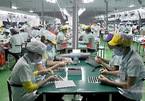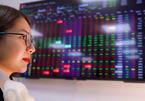 |
|
In the new strategy, the highest requirement is to avoid congestion and disruption so as to ensure the recovery momentum.
|
As countries around the world have been under social distancing due to the Covid-19 pandemic, The Economist has coined the phrase "90% economy" to describe what will be left when lockdowns are lifted. It said that the post-COVID economy will be smaller and will take a long time to fully recover.
Some people think that 90% is a satisfactory number. But with an economy, 90% represents risks and challenges. In China, where the epidemic is under control and anti-epidemic measures have eased, 90% of the economy has resumed but is still a long way from normal levels.
With a 10% shortfall, the economy still has many wounds. Flights and subways have reduced the number of passengers by a third. People are weighed down by financial hardship and fear of the epidemic. Consumption such as eating and drinking out declines by up to 40%. Hotel bookings drop by one-third of the normal level. The number of businesses going bankrupt and unemployed workers is on the rise, with the actual number three times higher than in the reported figures.
In the US, the GDP fell by 10%, the steepest decline since World War II. Many businesses plan to cut spending and lay off workers as market demand falters and the economy shrinks. Some states with high cash reserves are struggling.
Many countries have accepted to live with Covid-19 and gradually reopen the economy. However, after a long period of turmoil due to blockades, many small businesses are still facing an impact from a global supply chain crisis.
Prices of raw materials and commodities have increased significantly. Catering suppliers require customers to increase the minimum orders. Shipping costs have risen, the shipping process is congested, and delivery time is delayed, causing suppliers to hesitate and fulfill small orders.
According to a survey by Pew Research, more than a third of respondents said that if they lose their main source of income, the money they save, borrow or sell will only be enough to sustain themselves for slightly more than three years. They are the most vulnerable because they work in occupations that use cheap labor.
The US Congress and President Biden earlier passed a $1.9 trillion economic stimulus bill. Cash and unemployment benefits flowed into the pockets of Americans. People started shopping, pushing demand from 0 to 100, but supply has not easily recovered.
According to the latest data released by the US Department of Commerce, the country’s GDP growth rate in the third quarter of 2021 was 2%, a decrease compared to 6.7% and 6.3% of the two previous quarters. A recent poll found that 65% of American adults believed the economy is very weak.
US consumer confidence has plummeted in recent months. This shift is very similar to the situation before the Great Recession of 2008, which showed that the US economy was in an alarming state, and they predicted the economy would shrink this year.
In China, growth is likely to slow, with an average growth rate of 3-4% over the next few years, according to Nomura Group. The world's second-largest economy is facing pressure from a shortage of energy and input fuels, along with the impact of the government's drastic reorganization of a number of key economic sectors such as real estate.
"The slowdown in growth will be larger and more prolonged than any period we've seen in the last 10 years," said Kevin Lai, chief economist for Asia at Daiwa Capital Markets.
In Southeast Asia, the pandemic has subsided, and factories and production facilities have reopened, helping to restore key links in the global supply chain. However, many economies in the region continue to face labor shortages, rising sea freight rates, and the risk of outbreaks
According to the Wall Street Journal, the global economy's recovery from last year's deep recession is approaching a delicate juncture, as policymakers and business executives grapple with a bumpy transition from the post-pandemic reopening phase to a more normal growth phase.
“This is a tough period for the recovery. Policymakers need to map out long-term solutions as well as short-term solutions,” said Neil Shearing, chief economist at Capital Economics in London.
Vietnam’s recovery
While Vietnam's economy is still struggling with difficulties, the world economy is recovering clearly, after a long period of paralysis due to the impact of the epidemic.
In its recently released report, the World Bank (WB) was optimistic about the prospect for Vietnam's economic recovery. The financial institution said the economic decline has bottomed out and now is the time for Vietnam's economy to start recovering.
It cited a series of 10-month macroeconomic indicators, such as the industrial production index in October increasing by 6.9% compared to September and only 1.6% lower than the same period last year; total retail sales of consumer goods and services in October increasing by 19.1% compared to September, far exceeding the rise of 4.4% in the previous month; inflation at 1.8%; and credit balance of the economy up by 14.2%.
The Covid-19 pandemic has helped the Government, businesses and people better understand the importance of resilience to take bold and transformative steps to shift the focus to survival, adaptation, and growth in the face of shocks.
In the new strategy, the highest requirement is to avoid congestion and disruption so as to ensure the recovery momentum. In fact, the biggest difficulty of Vietnamese enterprises today is the shortage of labor. In the southern region, businesses are unable to restore 100% of their capacity due to labor shortages.
In addition, due to the impact of the Covid-19 epidemic, spending for raw materials and logistics services are both increasing. These factors are putting pressure on businesses.
However, businesses can resume production under Resolution 128/NQ-CP, when anti-epidemic measures can both ensure health and safety for people but not cause too much disruption to production activities of enterprises.
According to the World Bank, Vietnam needs to strengthen its growth engine in order to recover the economy. Measures proposed by the World Bank are proactive fiscal policies, such as tax exemption and reduction, removal of difficulties for businesses, and speeding up of public investment projects. They also need to speed up vaccinations and maintain testing and quarantine measures to avoid new waves of epidemics.
Vietnam should also take advantage of this opportunity to accelerate digital transformation in businesses and government agencies to reap the benefits of digitalization.
Duy Anh

The cost of reopening the economy
Nearly two months have passed since Ho Chi Minh City and 18 southern provinces have lifted lockdown measures and set up the "new normal", with the operations of people and enterprises gradually resuming.

Economist warns of side effects from bailouts
Vietnam is considering an unprecedented support package, including tax reductions, interest rate subsidies and cash to people. However, the package needs to be tailored to the economy’s size or it will cause “side effects”, an expert has said.